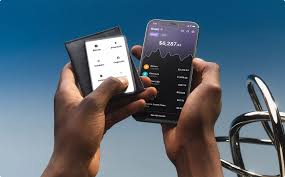A ledger, in its simplest form, is a record-keeping tool that chronicles ledger financial transactions or activities over time. It has evolved from an ancient manual book of accounts to a powerful digital tool driving modern financial systems. Despite its evolution, the fundamental purpose of a ledger remains the same—to provide transparency, accountability, and accuracy in managing records.
The Origins of the Ledger: A Glimpse into Ancient Times
The concept of a ledger has ancient roots, dating back thousands of years. Early civilizations, such as the Sumerians and Egyptians, utilized rudimentary methods to track economic exchanges. In these societies, transactions were recorded on clay tablets or papyrus scrolls. These records would typically capture vital details—such as the parties involved, quantities of goods exchanged, and their corresponding value.
As trade and commerce expanded, there emerged a need for a more sophisticated means of accounting. By the time of the Romans, ledgers had evolved into more formalized systems of accounting. In particular, the double-entry bookkeeping method became widely adopted in medieval Europe, ensuring that each transaction was balanced by a corresponding debit and credit.
The Role of Ledgers in Modern Accounting
Today, the ledger remains one of the cornerstones of modern accounting. In its most basic form, it is divided into two categories: the general ledger (GL) and the subsidiary ledgers. The GL is the central repository of all financial transactions of a business, containing all the company’s accounts, such as assets, liabilities, income, and expenses. Subsidiary ledgers, on the other hand, track specific accounts in greater detail, such as accounts payable or accounts receivable.
This structure enables businesses to keep accurate and organized records of their financial activities, facilitating the preparation of financial statements like the balance sheet, income statement, and cash flow statement.
Furthermore, accounting software has dramatically transformed the role of ledgers. What was once a painstaking process of manual entries is now automated and digitized. Software like QuickBooks, Xero, and Sage offers businesses real-time tracking of transactions and the ability to generate reports instantly. This shift has streamlined financial operations, improved accuracy, and allowed businesses to focus more on analysis and strategy rather than manual data entry.
Blockchain Technology: The New Frontier for Ledgers
In the 21st century, the rise of blockchain technology has brought about a revolutionary shift in how ledgers are used. Blockchain is a decentralized, digital ledger that records transactions across multiple computers in a secure and transparent manner. Unlike traditional ledgers, which are maintained by a single entity (such as a bank or accounting firm), blockchain is distributed across a network of nodes, making it tamper-resistant and eliminating the need for intermediaries.
Blockchain’s ledger has been hailed as a game-changer, especially in the fields of finance and cryptocurrencies. For example, Bitcoin transactions are validated and recorded on a blockchain, ensuring that all parties have access to the same version of the ledger without the risk of fraud or data manipulation. This decentralized approach has spurred the development of a wide array of decentralized applications (dApps) and smart contracts, opening the door to new forms of governance, business models, and financial transactions.
Beyond cryptocurrency, industries like supply chain management, healthcare, and even voting systems are exploring blockchain’s potential to provide secure, transparent ledgers that operate without the need for a central authority.
The Benefits and Challenges of Modern Ledgers
Benefits:
- Transparency: Ledgers, especially in blockchain, provide an open and accessible record of all transactions, ensuring that all parties have access to the same data and reducing the risk of fraud.
- Accuracy: Automation in digital ledgers reduces human errors, leading to more accurate records.
- Efficiency: Digital ledgers enable real-time access to information and streamlined operations, reducing the time spent on manual reconciliation and reporting.
- Security: With blockchain, the decentralized nature of the ledger ensures that no single entity can alter records, making it highly secure and resistant to hacking or unauthorized tampering.
Challenges:
- Complexity: The learning curve for understanding and implementing new ledger technologies, especially blockchain, can be steep for businesses and individuals not familiar with digital systems.
- Regulatory Concerns: While blockchain offers immense potential, regulatory frameworks for digital ledgers are still evolving, which may present compliance challenges.
- Scalability: As more transactions are added to blockchain networks, the question of scalability and speed of transactions becomes a concern. For example, Bitcoin and Ethereum have faced criticisms over transaction delays and high fees during peak usage periods.
The Future of Ledgers: Evolving with Technology
The ledger’s transformation—from clay tablets to blockchain—is a testament to its adaptability and enduring value in maintaining order and transparency. As technology continues to evolve, so too will the ledger’s role in the financial and business worlds. Innovations in artificial intelligence (AI), machine learning, and quantum computing could bring further advancements in how ledgers are maintained, analyzed, and secured.
The continued development of decentralized finance (DeFi) platforms, powered by blockchain, is one such example of how ledgers are reshaping financial services. Through smart contracts and automated processes, DeFi platforms enable peer-to-peer lending, borrowing, and trading without the need for traditional financial institutions.
Conclusion
The ledger, whether in its ancient form or as a digital, decentralized marvel, remains an indispensable tool in the world of finance, business, and beyond. It has stood the test of time, evolving with the needs of society and technological advancements. As we move further into the digital age, the ledger will continue to adapt, paving the way for more secure, transparent, and efficient systems in various industries.
